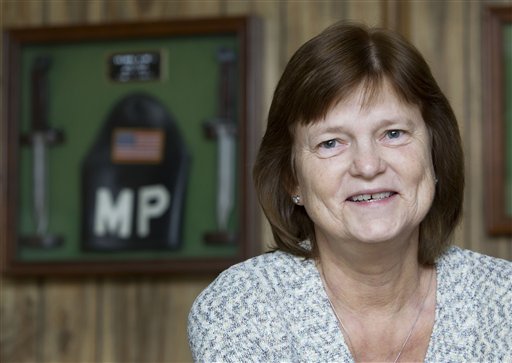RALEIGH, N.C. — Former U.S. Army Capt. Linda L. Bray says her male superiors were incredulous upon hearing she had ably led a platoon of military police officers through a firefight during the 1989 invasion of Panama.
Instead of being lauded for her actions, the first woman in U.S. history to lead male troops in combat said higher-ranking officers accused her of embellishing accounts of what happened when her platoon bested an elite unit of the Panamanian Defense Force. After her story became public, Congress fiercely debated whether she and other women had any business being on the battlefield.
The Pentagon’s longstanding prohibition against women serving in ground combat ended Thursday, when Defense Secretary Leon Panetta announced that most combat roles jobs will now be open to female soldiers and Marines. Panetta said women are integral to the military’s success and will be required to meet the same physical standards as their male colleagues.
“I’m so thrilled, excited. I think it’s absolutely wonderful that our nation’s military is taking steps to help women break the glass ceiling,” said Bray, 53, of Clemmons, N.C. “It’s nothing new now in the military for a woman to be right beside a man in operations.”
The end of the ban on women in combat comes more than 23 years after Bray made national news and stoked intense controversy after her actions in Panama were praised as heroic by Marlin Fitzwater, the spokesman for then-President George H.W. Bush.
Bray and 45 soldiers under her command in the 988th Military Police Company, nearly all of them men, encountered a unit of Panamanian special operations soldiers holed up inside a military barracks and dog kennel.
Her troops killed three of the enemy and took one prisoner before the rest were forced to flee, leaving behind a cache of grenades, assault rifles and thousands of rounds of ammunition, according to Associated Press news reports published at the time. The Americans suffered no casualties.
Citing Bray’s performance under fire as an example, Rep. Patricia Schroeder, D-Colo., introduced a bill to repeal the law that barred female U.S. military personnel from serving in combat roles.
But the response from the Pentagon brass was less enthusiastic.
“The responses of my superior officers were very degrading, like, ‘What were you doing there?'” Bray said. “A lot of people couldn’t believe what I had done, or did not want to believe it. Some of them were making excuses, saying that maybe this really didn’t happen the way it came out.”
Schroder’s bill died after top generals lobbied against the measure, saying female soldiers just weren’t up to the physical rigors of combat.
“The routine carrying of a 120-pound rucksack day in and day out on the nexus of battle between infantrymen is that which is to be avoided and that’s what the current Army policy does,” Gen. M.R. Thurman, then the head of the U.S. Southern Command, testified before the Senate Armed Services Committee.
For Bray, the blowback got personal.
The Army refused to grant her and other female soldiers who fought on the ground in Panama the Combat Infantryman Badge. She was awarded the Army Commendation Medal for Valor, an award for meritorious achievement in a non-combat role.
Bray was also the subject of an Army investigation over allegations by Panamanian officials that she and her soldiers had destroyed government and personal property during the invasion that toppled Panamanian dictator Manuel Noriega.
Though eventually cleared of any wrongdoing, the experience soured Bray on the Army. In 1991, she resigned her commission after eight years of active duty and took a medical discharge related to a training injury.
Today’s military is much different from the one Bray knew, with women already serving as fighter pilots, aboard submarines and as field supervisors in war zones. But some can’t help but feel that few know of their contributions, said Alma Felix, 27, a former Army specialist.
“We are the support. Those are the positions we fill and that’s a big deal — we often run the show — but people don’t see that,” Felix said. “Maybe it will put more females forward and give people a sense there are women out there fighting for our country. It’s not just you’re typical poster boy, GI Joes doing it.”
Spc. Heidi Olson, a combat medic, received a purple heart for injuries she suffered when an IED exploded in Afghanistan last May.
“It makes it official now,” Olson said. “We don’t have to do the back door way of getting out into a combat zone.”
Send questions/comments to the editors.


